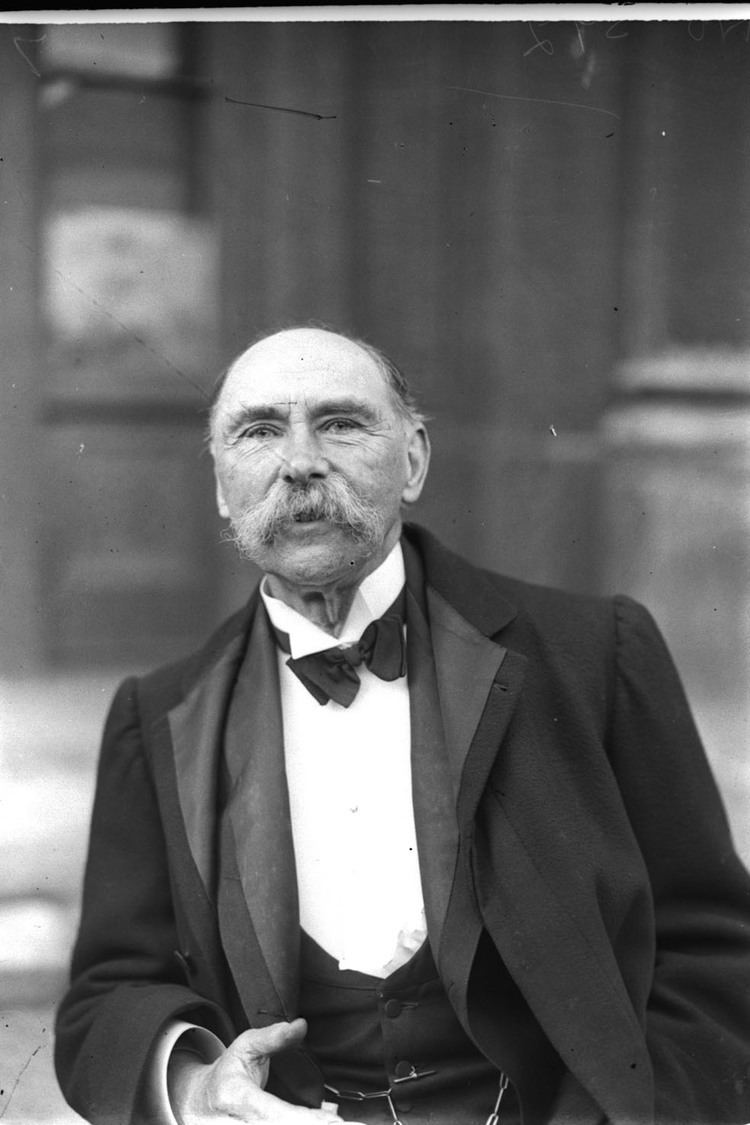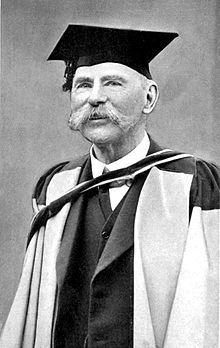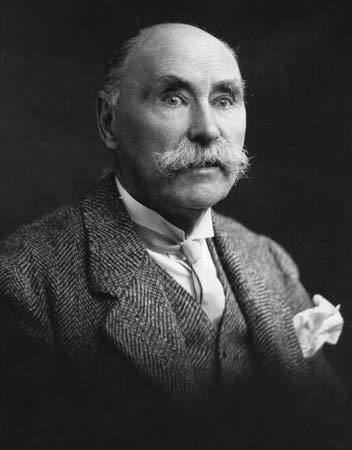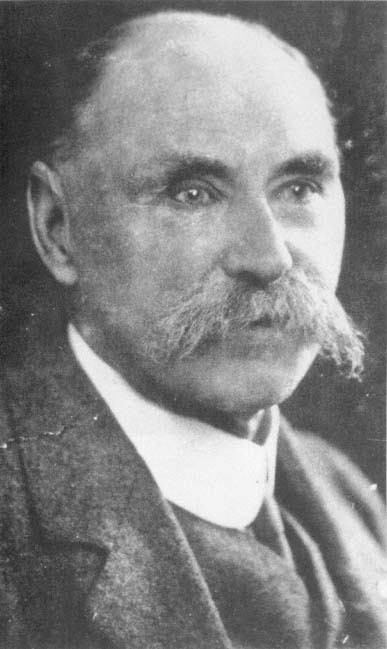Preceded by New office Nationality Irish | Full Name Douglas Hyde Name Douglas Hyde Succeeded by Sean T. O'Kelly Children NualaUna | |
 | ||
Born 17 January 1860Castlerea, Ireland ( 1860-01-17 ) Died July 12, 1949, Dublin, Republic of Ireland Presidential term June 25, 1938 – June 24, 1945 Books Dedication And Leadership, The Necessity for De‑an, A literary history of Ireland fr, Beside the fire, The Revival of Irish Liter Similar People Augusta - Lady Gregory, W B Yeats, Charles Gavan Duffy, George Sigerson, Jeremiah Curtin | ||
Political party All-party nomination Education Trinity College, Dublin | ||
Dublin's New President (1938)
Douglas Ross Hyde (Irish: Dubhghlas de hÍde; 17 January 1860 – 12 July 1949), known as An Craoibhín Aoibhinn (lit. "The Pleasant Little Branch"), was an Irish academic, linguist, and scholar of the Irish language (Gaeilge) who served as the 1st President of Ireland from June 1938 to June 1945. He was a leading figure in the Gaelic revival, and first president of the Gaelic League, one of the most influential cultural organisations in Ireland at the time.
Contents
- Dublins New President 1938
- Funeral of dr douglas hyde former president of ireland 1949
- Background
- Conradh na GaeilgeGaelic League
- Senator
- Nomination
- Inauguration
- Presidency
- Retirement and death
- State funeral
- References

Funeral of dr douglas hyde former president of ireland 1949
Background

Hyde was born at Longford House in Castlerea, County Roscommon, while his mother, Elizabeth née Oldfield (1834–1886) was on a short visit there. His father, Arthur Hyde, whose family were originally from Castlehyde, Fermoy, County Cork, was Church of Ireland rector of Kilmactranny, County Sligo from 1852 to 1867, and it was here that Hyde spent his early years. Arthur Hyde and Elizabeth Oldfield married in County Roscommon in 1852 and had three other children, Arthur (1853–79 in County Leitrim), John Oldfield (1854–96 in County Dublin), and Hugh (1856) Hyde.

In 1867, his father was appointed prebendary and rector of Tibohine, and the family moved to neighbouring Frenchpark, in County Roscommon. He was home schooled by his father and his aunt due to a childhood illness. While a young man, he became fascinated with hearing the old people in the locality speak the Irish language. He was influenced in particular by the gamekeeper Seamus Hart and the wife of his friend, Mrs. Connolly. He was crushed when Hart died (Douglas was 14) and his interest in the Irish language, which was the first language he began to study in any detail, as his own undertaking, flagged for a while. However, he visited Dublin a number of times and realised that there were groups of people, just like him, interested in Irish, a language looked down on at the time by many and seen as backward and old-fashioned.

Rejecting family pressure that, like past generations of Hydes, he would follow a career in the Church, Hyde instead became an academic. He entered Trinity College, Dublin, where he became fluent in French, Latin, German, Greek and Hebrew, graduating in 1884 as a moderator in modern literature. A medallist of the College Historical Society, he was elected its President in 1931. His passion for Irish, already a language in severe decline, led him to help found the Gaelic League, or in Irish, Conradh na Gaeilge, in 1893.

Hyde married Lucy Kurtz, a German, in 1893 and had two daughters, Nuala and Úna.
Conradh na Gaeilge/Gaelic League
Hyde joined the Society for the Preservation of the Irish Language around 1880, and between 1879 and 1884 he published more than a hundred pieces of Irish verse under the pen name "An Craoibhín Aoibhinn" ("The Pleasant Little Branch").
Initially derided, the Irish language movement gained a mass following. Hyde helped establish the Gaelic Journal in 1892; in November, he wrote a manifesto called The necessity for de-anglicising the Irish nation, arguing that Ireland should follow their own traditions in language, literature and dress.
In 1893 he helped found the Conradh na Gaeilge (Gaelic League) to encourage the preservation of Irish culture, music, dance, and language. A new generation of Irish republicans (including Patrick Pearse, Éamon de Valera, Michael Collins, and Ernest Blythe) became politicised through their involvement in Conradh na Gaeilge. Hyde filled out the 1911 census form in Irish.
Uncomfortable at the growing politicisation of the movement, Hyde resigned the presidency in 1915 and was succeeded by the League's co-founder, Eoin MacNeill.
Senator
Hyde had no association with Sinn Féin and the Independence movement. He was elected to Seanad Éireann, the upper house of the Irish Free State's Oireachtas, at a by-election on 4 February 1925, replacing Sir Hutcheson Poë.
In the 1925 Seanad election, Hyde was eliminated 28th of the 78 candidates, with 19 seats available. The Catholic Truth Society opposed him for his Protestantism and publicised his supposed support for divorce. Historians have suggested that the CTS campaign was ineffective, and that Irish-language advocates performed poorly, with all those endorsed by the Gaelic League losing.
He returned to academia, as Professor of Irish at University College Dublin, where one of his students was future Attorney General and President of Ireland Cearbhall Ó Dálaigh.
Nomination
In April 1938, by now retired from academia, was plucked from retirement by Taoiseach Éamon de Valera and again appointed to Seanad Éireann. Again his tenure proved short, even shorter than before. But this time it was because, on the suggestion of Fine Gael, Hyde was chosen after inter-party negotiations as the first President of Ireland, to which he was elected unopposed. He was selected for a number of reasons:
Inauguration
Hyde was inaugurated as the first President of Ireland on 26 June 1938. The Irish Times reported it as follows:
Hyde set a precedent by reciting the Presidential Declaration of Office in Irish. His recitation, in Roscommon Irish, is one of a few recordings of a dialect of which Hyde was one of the last speakers. Upon inauguration, he moved into the long vacant Viceregal Lodge in Phoenix Park, since known as Áras an Uachtaráin.
Hyde's selection and inauguration received worldwide media attention and was covered by newspapers in Australia, New Zealand, South Africa, Argentina, and even Egypt. Hitler "ordered" the Berlin newspapers "to splash" on the Irish presidential installation ceremony. However, the British government ignored the event. The Northern Ireland Finance Minister, John Miller Andrews, described Hyde's inauguration as a "slight on the King" and "a deplorable tragedy."
Presidency
Despite being placed in a position to shape the office of the presidency via precedent, Hyde by and large opted for a quiet, conservative interpretation of the office. His age and health obligated him to schedule periods of rest throughout his days, and his lack of political experience caused him to defer to his advisers on questions of policy and discretionary powers, especially to his Secretary, Michael McDunphy. On 13 November 1938, just months after Hyde's inauguration, Hyde attended an international soccer match between Ireland and Poland at Dalymount Park in Dublin. This was seen as breaching the GAA's ban on 'foreign games' and he was subsequently removed as patron of the GAA, an honour he had held since 1902.
However, after a massive stroke in April 1940, plans were made for his lying-in-state and state funeral. However, Hyde survived, albeit paralysed and having to use a wheelchair.
Although the role of President of Ireland was largely ceremonial, Hyde did make important decisions during his presidency. He was confronted with a crisis in 1944 when de Valera's government unexpectedly collapsed in a vote on the Transport Bill and the President had to decide whether or not to grant an election to de Valera. Under the Constitution the President of Ireland may grant or refuse a dissolution to a Taoiseach who has "ceased to retain the support of a majority in Dáil Éireann". If a dissolution is granted, a general election is proclaimed to fill the seats now vacated by the dissolution. However, this means that for four to six weeks, until the new Dáil assembles, there is no Dáil. Fearing this gap might facilitate an invasion during World War II, during which no parliament could be called upon to deal with the invasion, the Oireachtas enacted emergency legislation (under Article 28.3.3°) - the General Elections (Emergency Powers) Act 1943 - which allowed an election to be called separate from a dissolution, with the Dáil only being dissolved just before new Dáil would assemble, so ensuring the gap between Dála (plural of Dáil) would be too short to facilitate an invasion. Under the Act the President could "refuse to proclaim a general election on the advice of a Taoiseach who had ceased to retain the support of a majority in Dáil Éireann".
Hyde had that option, but after considering it with his senior advisor, Michael McDunphy, he opted to grant de Valera his election request. Hyde twice used his power under Article 26 of the Constitution, having consulted the Council of State, to refer a Bill or part of a Bill to the Supreme Court, for the court's decision on whether the Bill or part referred is repugnant to the Constitution (so that the Bill in question cannot be signed into law).
On the first occasion, the court held that the Bill referred – Offences Against the State (Amendment) Bill, 1940 – was not repugnant to the Constitution. In response to the second reference, the Court decided that the particular provision referred – section 4 of the School Attendance Bill, 1942 – was repugnant to the Constitution. Because of Article 34.3.3° of the Constitution, the constitutional validity of the Offences Against the State (Amendment) Act, 1940 cannot be challenged in any court, since the Bill which became that Act was found by the Supreme Court not to be repugnant in the context of an Article 26 reference.
One of Hyde's last presidential acts was a visit to the German ambassador Eduard Hempel on 3 May 1945 to offer his condolences on the death of Adolf Hitler. The visit remained a secret until 2005.
Retirement and death
Hyde left office on 25 June 1945, opting not to nominate himself for a second term. Due to his ill-health he did not return to his Roscommon home, Ratra, empty since the death of Hyde's wife early in his term. He moved into the former Secretary to the Lord Lieutenant's residence in the grounds of Áras an Uachtaráin, which he renamed Little Ratra and where he lived out the remaining four years of his life. He died at 10pm on 12 July 1949, aged 89.
State funeral
As a former President of Ireland he was accorded a state funeral. A problem arose; as a member of the Church of Ireland his funeral service took place in Dublin's Church of Ireland St. Patrick's Cathedral. However, contemporary rules of the Roman Catholic Church in Ireland prohibited Roman Catholics from attending services in non-Catholic churches. As a result, all but one member of the Catholic cabinet, Noël Browne, remained outside the cathedral grounds while Hyde's funeral took place. They then joined the cortège when his coffin left the cathedral. Éamon de Valera, by now Leader of the Opposition also did not attend, being represented by a senior Fianna Fáil figure who was a member of the Church of Ireland, Erskine H. Childers, a future President of Ireland himself. Hyde was buried in Frenchpark, County Roscommon at Portahard Church, (where he had spent most of his childhood life) beside his wife Lucy, his daughter Nuala, his sister Annette, mother Elizabeth and father Arthur.
